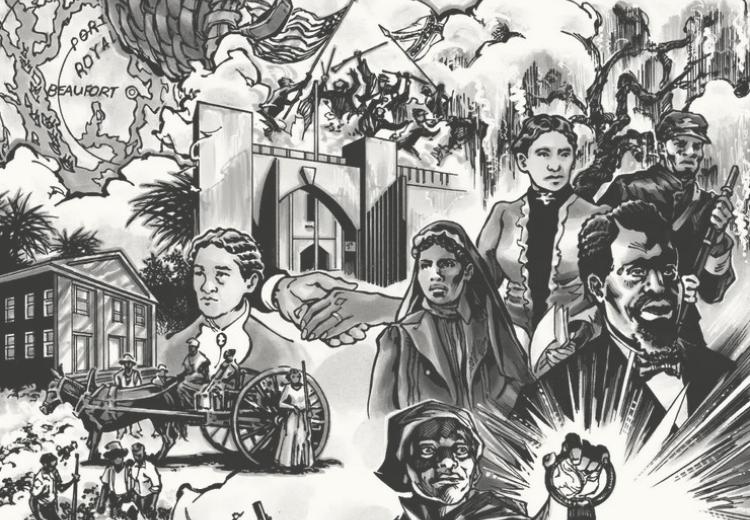Free and Equal: The Promise of Reconstruction in America

Key figures Harriet Tubman, Robert Smalls, Susie King Taylor, Laura Towne, Charlotte Forten, and Isaiah Brown posed with Brick Baptist Church and the Beaufort Arsenal, two important sites within our story of the Sea Islands.
Eric Battle, Free and Equal Project Website
In 1861, years before the signing of the Emancipation Proclamation or the end of the Civil War, communities of formerly enslaved people on the abandoned plantations of the South Carolina Sea Islands engaged in what historians have called the “rehearsal for Reconstruction.”
Free and Equal: The Promise of Reconstruction in America is an NEH-funded digital humanities project that tells the story of this largely forgotten place and time in history and how the lives and actions of these freedpeople played a critical role in defining freedom and equality for African Americans during and after the Civil War.
Using a rich collection of primary sources and interpretation by historians, the project explains how circumstances in the Sea Islands of South Carolina made it possible for Black communities to develop under their own leadership during the Civil War. The project tells this history through seven thematic sections, focusing on the broader context of this time period, different aspects of everyday life in these communities, and the lessons and legacies of this experiment. Use the guiding questions below to assist students as they explore those sections on the site.
